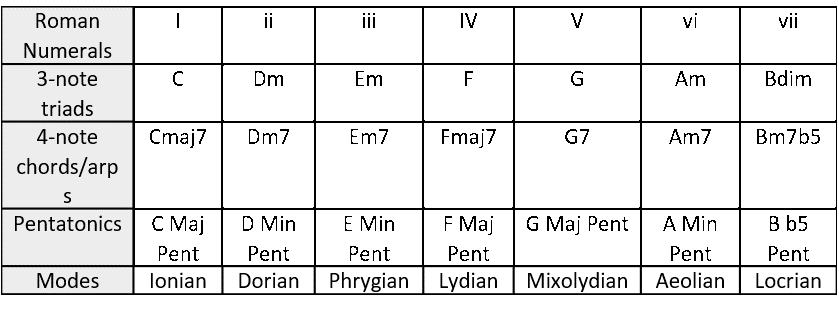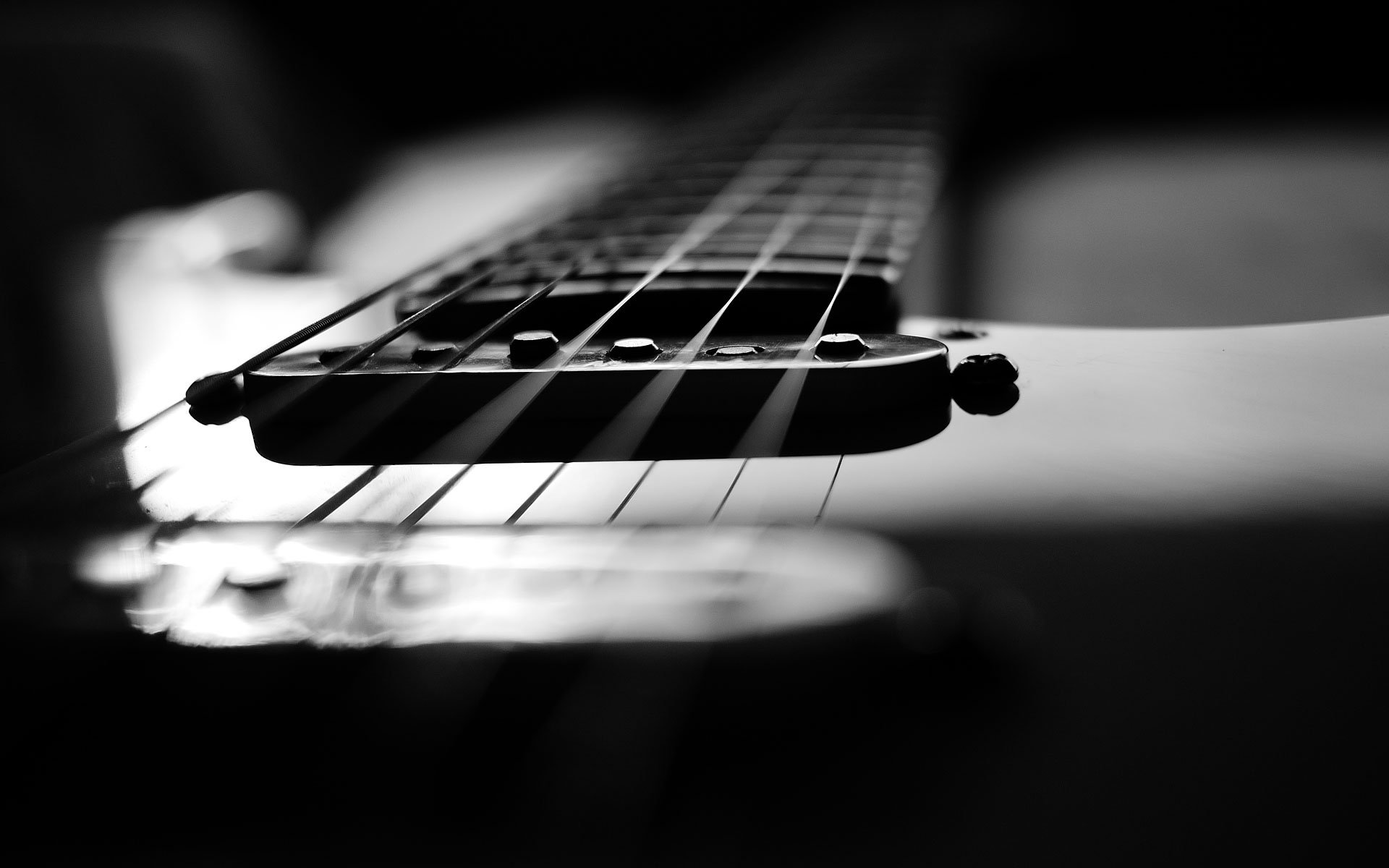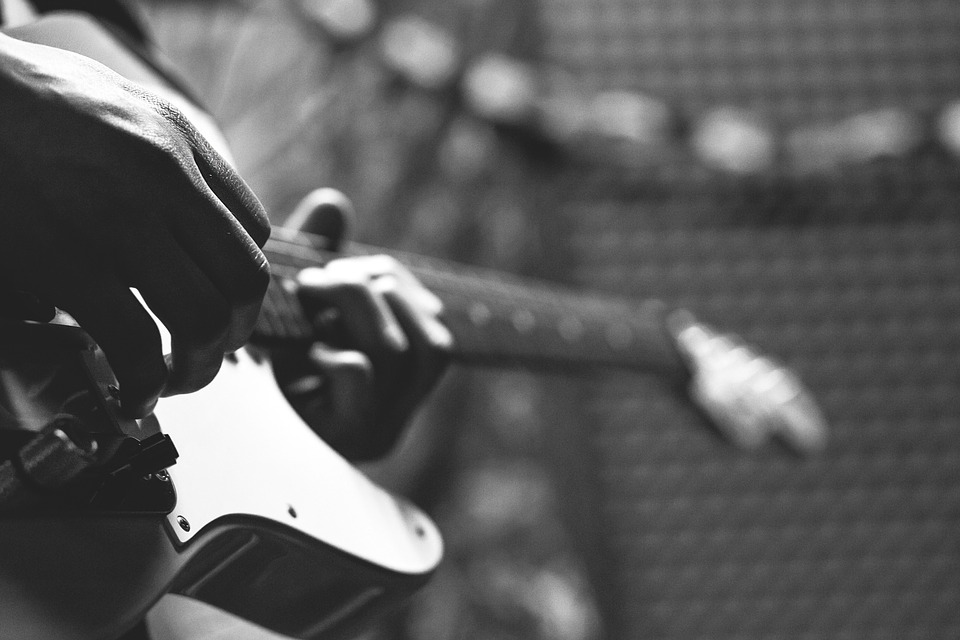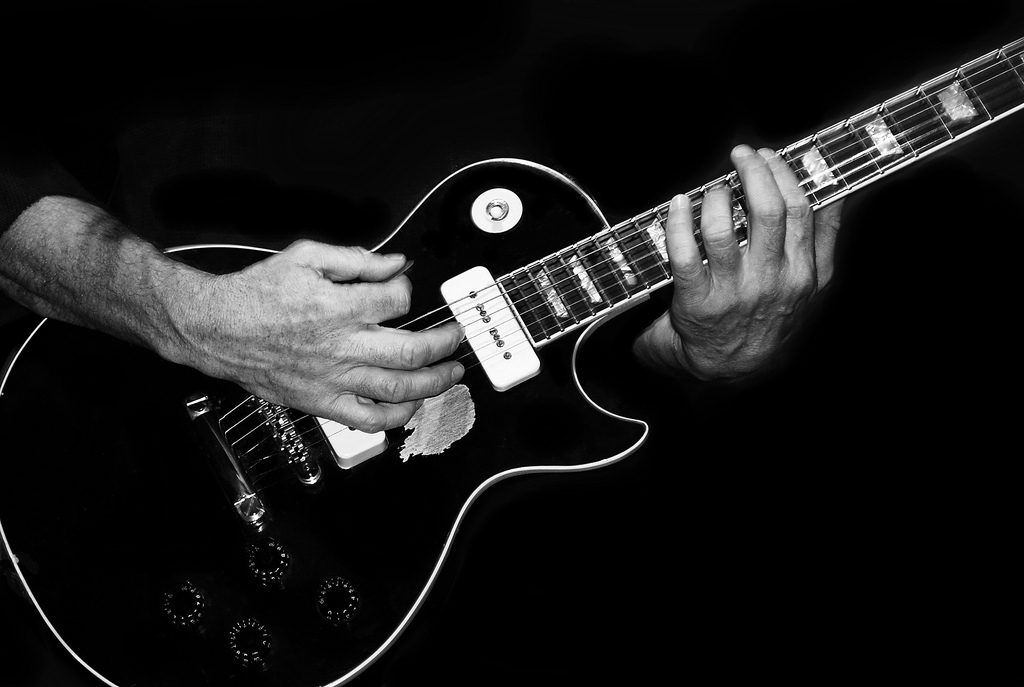Truth be told, I always found arpeggios very challenging to learn and ended up trying to force them into my playing. At Music College we were given all these patterns to learn that you’d spend hours on end practicing, but which seemed to have little or no practical use or effect on your playing. Scales, on the other hand, were far more intriguing and offer fairly instant gratification when you go to improvise. This was all well and good and got me through in most playing situations, but I was still curious about arpeggios and desperately wanted to be able to incorporate that melodic edge into my playing; besides, it was getting to a point where I found it slightly embarrassing not knowing them…
Lightbulb Moment
The lightbulbs came on when I realized that arpeggios are parts of scales. This may seem blindingly obvious to most but, in my mind, I really hadn’t made the connection between those the clunky patterns and the scales I already knew. The other missing ingredient was an awareness of diatonic harmony, which you can check out here.
Since I already knew my major scales up and down the neck, I started to pick out diatonic arpeggios, but not the clunky patterns, as I had deemed these more suitable for playing ‘etudes’ and more shred-oriented japery. I was more interested in having a way to access arpeggios based on scales rather than separate patterns.
So, I came up with these patterns on adjacent strings which can be easily moved around the fretboard. Just as a reference, here’s (a little of) what you can find in your average key signature (diatonic harmony):

An arpeggio then is the notes of a chord played individually or in some kind of sequence. In this lesson, we’re interested in the middle two columns, 3-note triads/arpeggios and 4-note chords/arpeggios.
The Most Important Bit
The most important thing here is how you transfer this information to the guitar neck. This is critical, in fact, because if like me you’re not a fan of those clunky patterns, you’re never going to have the motivation to learn this stuff. If, on the other hand, you start picking out arpeggios the way we’re going to do it in this lesson, you might be in with a chance.
I’m assuming you already have the diagram below imprinted onto your brain. If not, there are many ways to do it and I’d advise you to checkout out our free 3NPS system, the horizontal scale method, or our much-loved book, ‘Hacking the CAGED System’.

This is all the notes in C Major on a 24-fret guitar. It’s not essential to learn where every single note is up to the 24th fret (if you have one), as knowing about 75% of it will have you covered in most situations.
To simplify things, we’ll go up to the 15th fret in the following diagrams.
Triad Arpeggios
Triad arpeggios are simply the notes of a triad played individually. The following patterns will help you pull them out of the bigger pattern.
C Major

The idea here is that you learn to see these mini-shapes light up when you’re improvising using the scale pattern, especially when playing over chord changes, as they will give your lines and phrases a more melodic edge.
The above pattern can be found in other places on the fretboard:

As you can see, the pattern is the same on all adjacent strings EXCEPT the G and B strings due to the ‘bump’ or warp factor as I like to call it. It’s still the same pattern but if it falls on these strings, you’ll have to shift the notes on the B string up one fret. I prefer to think about it this way rather than as a whole new pattern.

The next triad arpeggio is D Minor:

Can you find the other instances of this D Minor triad arpeggio on the neck? Once you’ve located them try blending them with the scale pattern. This should give you a Dorian and/or D Minor Pentatonic feel as well.
Repeat this exercise with the rest of the diatonic arpeggios from C Major. The great thing here is that once you learn this in one key, it’s the same in all the others.
E Minor

F Major

G Major

A Minor

B Diminished

Once you have the above patterns down, it’s simply a matter of adding one note to form the seventh arpeggios.
First up is the Cmaj7 arpeggio:

We add the 7 just below the root to keep everything within reach and easily accessible.
D Minor 7

E Minor 7

F Major 7

G7

A Minor 7

B Minor 7b5

Try moving these patterns around the fretboard and blending them with the C Major scale. With consistent practice, you’ll start to see these mini-patterns ‘pop out’ when improvising, and you’ll be able to call on them when improvising over chord changes.
In Part 2, we look at the remaining diatonic arpeggios.



